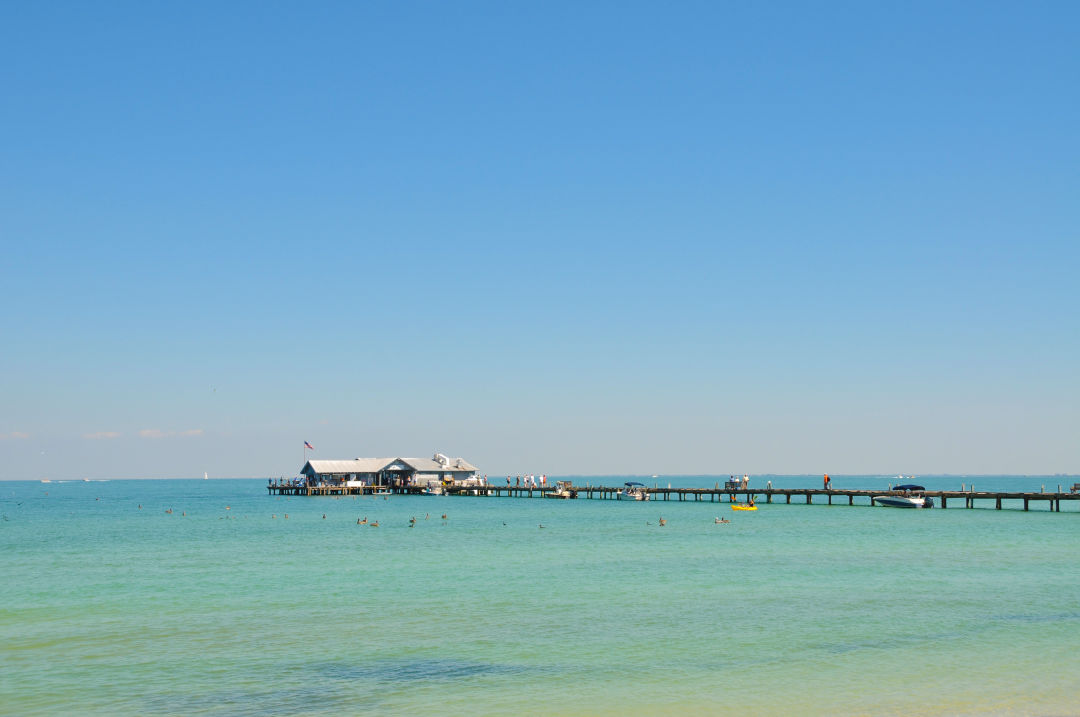How Local Tourism Is Shaping Up So Far This Year

It’s no surprise that March and April of last year saw a sharper-than-ever drop in tourism amid the Covid-19 shutdown. However, the climb back up has been better than may have been expected.
“We fared fairly well in 2020, and we're satisfied with the outcomes, all things considered,” says Elliott Falcione, executive director of the Bradenton Area Convention and Visitors Bureau.
The Bradenton Area Convention and Visitors Bureau tracks Bradenton, Anna Maria Island and the Manatee portion of Longboat Key. This area saw 724,800 visitors during fiscal year 2019 (October 2019 to September 2020) and 683,300 in 2020, a drop of 5.7 percent. In 2019, tourist development tax fund collections amounted to $16.3 million compared to $15.4 million in 2020—a decrease of almost 6 percent.
In Sarasota County, the decline was steeper—2,257,200 visitors in fiscal year 2020—a decrease of 19.3 percent over 2019, according to Visit Sarasota County data. There was a big drop in tourist development funds, as well. From October 2019 to September 2020, the county collected a little more than $21 million in tourist tax funds, a decrease of 10 percent compared to 2019. That difference amounted to $2.3 million.
Tourist development tax funds, also called bed taxes, come from a 5 percent levy on short-term vacation rentals countywide. The monies fund things like beach maintenance, the arts and professional sports stadiums.
Still, recent numbers are encouraging. The Bradenton area saw 86,000 visitors in January of 2020, and 84,800 in January 2021, with January 2021 tax collections surpassing those of January 2020. Sarasota's rebound started last July and steadily increased through the end of the fiscal year in September, despite the mandated limitations on international travel. Now, in 2021, gaps between this year’s numbers and those of previous years are already shrinking.
"There were 119,700 visitors who paid for lodging in January 2020 and in 2021 there were 87,600,” Virginia Haley, president of Visit Sarasota County, says. “There were 145,600 visitors who paid for lodging in February 2020 and 123,300 in February 2021."
Hotel occupancy is increasing, as well. In 2020, hotel occupancy in Sarasota County was 50 percent, for an average of $157 a night. But by February 2021, occupancy was up to 75 percent at an average of $206 a night.
Sporting events helped spur the recovery.
“We were awarded the World Golf Championships at the Concession. If it wasn't for Covid, we wouldn't have had the opportunity to host that caliber of event–800 million households around the globe tuned in,” Falcione says.
Nathan Benderson Park hosted the U.S. Olympic Team Trials for Rowing in February, the United States Olympic Trials for Canoe and Kayak in March and several other events, including the NCAA Women’s Rowing Championship. The Youth Soccer 2021 National Championships at Premier Sports Campus in Lakewood Ranch is slated for this July.
And while air traffic was down in 2020, the March 2021 passenger count at Sarasota Bradenton International Airport was 277,590, an all-time high for number of passengers. Travelers also took to the road in greater numbers.
Statistics from Visit Florida, the state’s tourism bureau, show a surge in driving. In the fourth quarter of 2020, 71 percent of the state’s visitors arrived by car, up from 55 percent the previous year.
"We saw many families drive as many as 18 hours to vacation here because we believe they looked at it as a safe, not dense destination," Falcione says.
While revenue from condos and hotels saw declines last year, demand for short-term vacation rentals featured on platforms like Airbnb and VRBO saw a sizable increase of almost 60 percent, from 1,952,774 visitors in 2019 to 3,107,283 visitors in 2020. This increase is probably due to consumer demand to maintain family and group "bubbles" to lower the chances of exposure to Covid-19, and mirror a national trend showing an increase in last-minute travel.
For hotels and restaurants, a focus on contact-free technology became attractive to visitors.
“Covid sped up the adoption of the touchless evolution, which was already underway, like digital keys, seamless check-ins with cell phones, and the return of the QR code for menus,” Haley says.
Tourists also got creative with social distancing and there was a “resurgence of golfing, fishing and boating, especially with charter captains,” she adds.
"On Anna Maria, even during peak season, we have more space than the norm. For 12 years we've gone by our brand that showcases a low rise, low-key, tranquil environment," Falcione says.